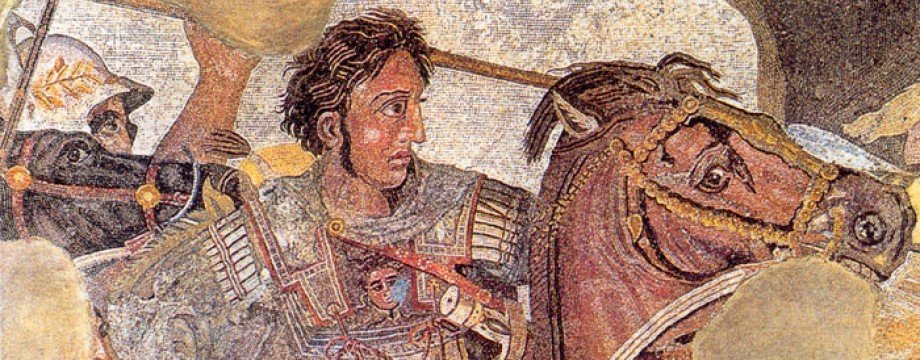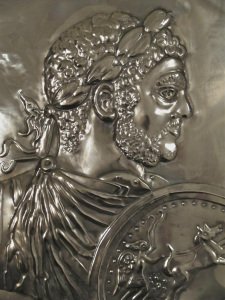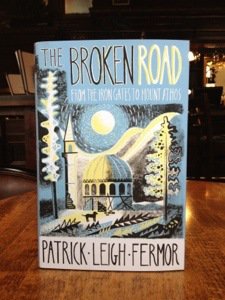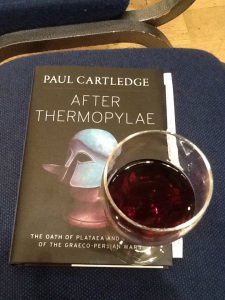Daily Diodorus
Vol. VIII. Book XVII Ch. 7 (Loeb Classical Library)
Read the other posts in this series here
Headlines
Darius Misjudges Alexander
Memnon Fails to Take Cyzicus
Parmenion and Calas Put To Flight
The Story
Before his death, Philip II sent Parmenion and Attalus to Asia Minor to prepare the way for his invasion. Diodorus covers this in the 91st chapter of Book XVI. Darius’ response was to prepare his own army to fight the Macedonians. Philip’s death, however, seemed to make this unnecessary; Darius did not rate Alexander. In fact, Diodorus says that the Great King ‘despised’ Alexander’s youth.
Things changed after Alexander’s rapid advance through Greece won the submission of the city-states and for himself the leadership of the Greeks in the war of revenge against the Persian Empire. Thereafter, Darius built up his navy and gathered his armies together. Very wisely, he also chose ‘his best commanders’ to lead his soldiers. One of the former was Memnon of Rhodes.
Darius ordered Memnon to take the city of Cyzicus in north-western Asia Minor. To get there, Memnon marched his men - five thousand mercenaries - across Mount Ida. The crossing was carried out successfully, and Memnon assaulted Cyzicus. But he failed to take it.
Unable to break Cyzicus’ resistance, Memnon ‘wasted its territory and collected much booty’. As he was doing this, Parmenion - presumably now in sole charge of the advance guard of the Macedonian army following the assassination of Attalus - conquered the (nearby - ?) city of Grynium. The inhabitants were sold into slavery and the Macedonians moved onto Pitane.
Parmenion put Pitane under siege but had not yet broken into the city when Memnon appeared on the horizon. Parmenion did not fancy putting his army to the test against Memnon’s mercenaries and retreated.
Diodorus ends Chapter 7 by telling us that later on a commander named Callas ‘with a mixed force of Macedonians and mercenaries joined battle in the Troad against a much larger force of Persians’. The Persians got the better of Callas on that day and he retreated to Rhoeteium. The Footnotes say that Calas (‘as the name is properly spelled’) was ‘of a family prominent in the Elimiotis’, which is in Upper Macedonia, and commanded the Thessalian cavalry in Alexander’s army until the king made him satrap of Hellespontine Phrygia.
Comments
Credit has to go to Darius for revising his opinion of Alexander once he learnt about the latter’s success in Greece. A lesser man would have been blinded by his arrogance into believing that no matter what the young king did he was still a mere youth and therefore inferior to one’s self.
As for Memnon, his arrival in the narrative brings to mind one of my favourite What Ifs: What if Memnon had lived? What would this have meant for Alexander’s invasion? Actually, I don’t suppose it would have made much of a difference to it at all. Alexander met Memnon at the Battle of the Granicus River and defeated him and all the Persian commanders. If he could do it once I am sure he could have done it again - just as he did twice with Darius.
Diodorus states that Memnon was ‘outstanding in courage and in strategic grasp’. Memnon demonstrated the latter when he advocated pursuing a scorched earth policy to wear Alexander’s army down. The Persian commanders refused to accept it, though; and, no wonder. They obviously thought that burning your house down in order to stop a thief from entering it seemed a rather self-defeating exercise. However, the harm done would have been temporary and it could have meant a weakened Macedonian army being defeated in battle or being forced to retreat home both empty handed and with empty stomachs. So maybe I should say my favourite What If is What if the Persians had burnt their crops? Would that have been enough to defeat Alexander? We’ll never know.
Regular readers of this blog might recognise Mount Ida. Is this the mountain that General Kreipe saw in the distance when he started to recite Horace’s IX Ode? No, it isn’t. That Ida is in Crete. For more about that famous moment during World War II, click here.
After digressing to explain an astronomical phenomena that one can see from the top of Anatolian Ida, Diodorus gives an example of Memnon pursuing his scorched earth policy. I guess on this occasion his aim was to defeat Cyzicus by reducing her people to a state of starvation. The booty, no doubt, was for his hard worked men.
Songs of the Age
Watch the World Burn b side Aggressive Expansion
Like this:
Like Loading...






